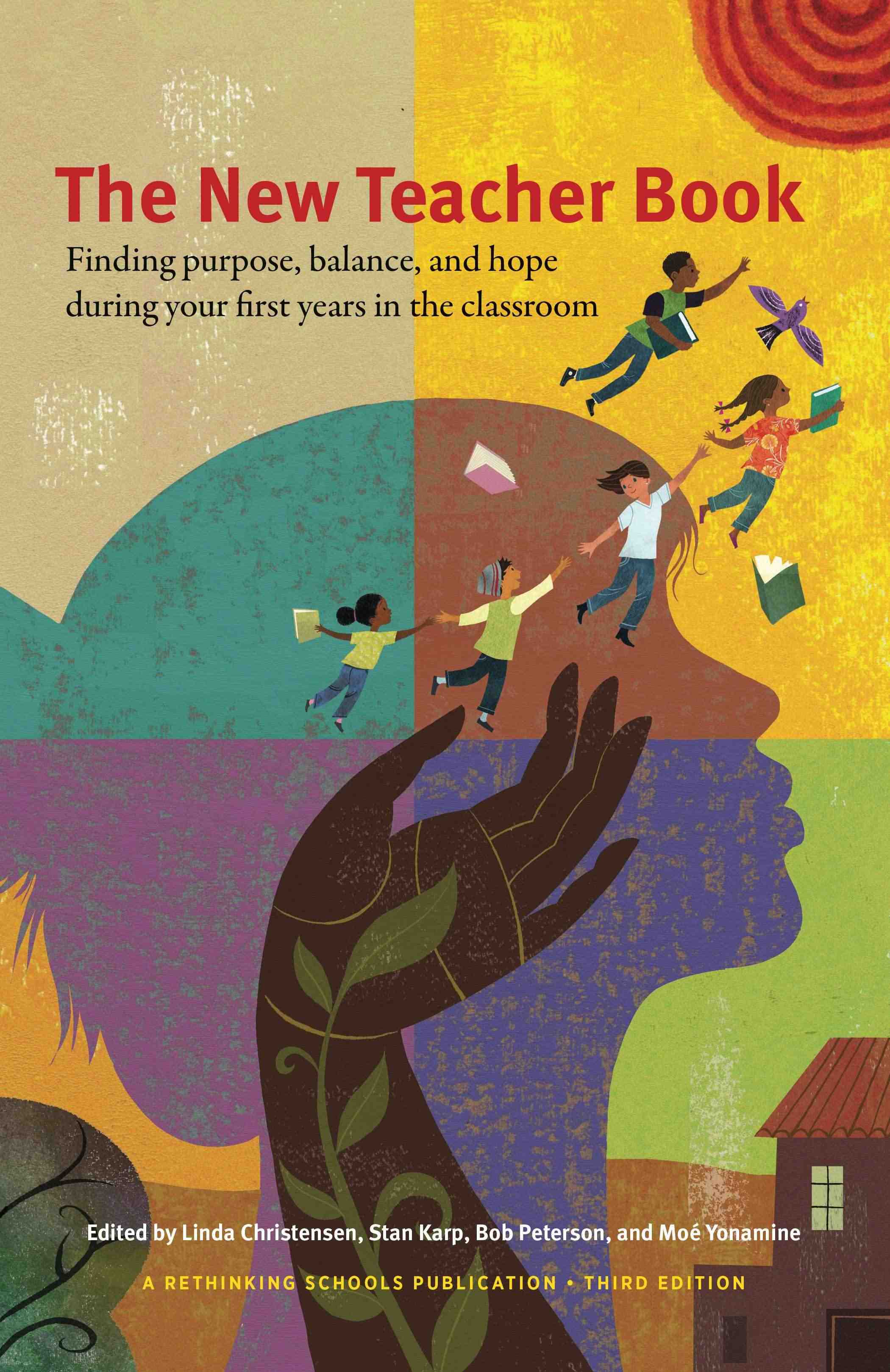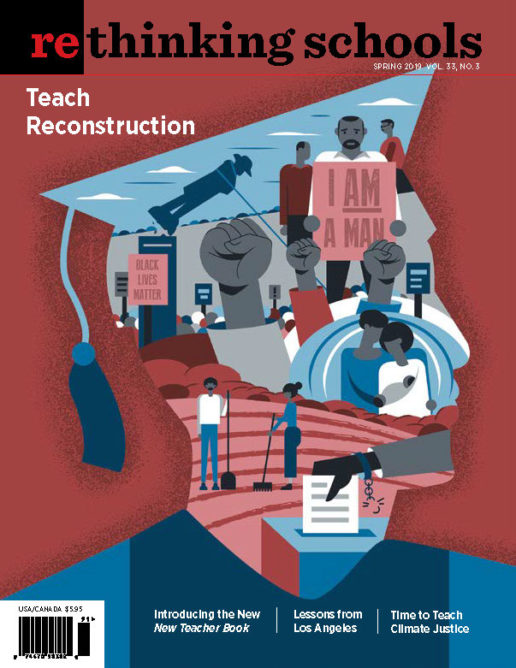Introducing the New, New Teacher Book

This third edition of The New Teacher Book began, appropriately enough, with new teachers. In the summer of 2017, with grant support from the National Education Association, Rethinking Schools convened two groups of early-career educators for three-day retreats in Milwaukee and Portland, Oregon.
The gatherings had two goals: to deepen our collective understanding of the practice of critical teaching for social and racial justice, and to critically review the second edition of Rethinking Schools’ The New Teacher Book with a view toward producing a significantly revised and updated new edition.
About 40 early-career teachers came to the gatherings from seven states. More than two-thirds were women; more than two-thirds teachers of color. Some were from LGBTQ communities. They taught across all grade levels and content areas in high-poverty schools, middle-class schools, and high-income schools. For three days they worked with Rethinking Schools editors, dissecting the second edition and discussing the elements needed to fill classrooms with learning, community, and justice. The work continued through the 2017-18 school year with writing groups in Oregon, Wisconsin, and New Jersey. The new teachers we worked with made invaluable contributions to this book. This volume includes many of their voices and insights. It also reflects nearly a decade of sweeping change in education since our last edition, published in 2010.
When Rethinking Schools editors first conceived this book, we thought back to our days as new teachers. We hoped to create the book we needed in those sometimes exhilarating, sometimes lonely, often hard first days of our teaching careers. We aimed to create a book that felt like a conversation among colleagues to help keep early-career teachers’ visions and values intact as they struggle in institutions that may or may not be the citadels of idealism where they imagined themselves teaching.
It’s important for the profession that new teachers with social justice ideals stay in the classroom. Our communities need teachers who see the beauty and intelligence of every student who walks through their doors and who are willing to keep trying to reach those who have often been told they aren’t worthy. Our students need teachers who value students’ home languages and know how to build academic strength from those roots.
Our schools need teachers who learn how to develop curriculum that ties students’ lives, history, and academic disciplines together and honors their expertise when top-down curriculum mandates explode across a district. Our school districts need teachers who can advocate against the dumbing-down of curriculum, against testing mania, and against turning our classrooms over to corporate-created curriculum. Our country needs teachers who understand the connections between race, class, gender, and inequality. How else do we make a lasting change?
We want new teachers to hold on to those impulses that brought them to teaching: a deep caring for students, the opportunity to be the one who sparks student growth and change, as well as the desire to be involved in work that matters. We need teachers who want to work in a place where human connections matter more than profit.
We also wrote this book because we have had days — many days — where our teaching aspirations did not meet the reality of the chaos we encountered. We have experienced those late afternoons crying-alone-in-the-classroom kind of days when a lesson failed or we felt like our students hosted a party in the room and we were the uninvited guests. We wrote this book hoping it might offer solace and comfort on those long days when young teachers wonder if they are cut out to be a teacher at all.
Given the full-court press against public schools, we need to remind all teachers to pay attention to the larger political context that shapes our lives in the classroom. Another reason to open the classroom door and peer outside is that new teachers’ survival depends on connecting with other teachers for support and assistance for social, political, and pedagogical solidarity. Isolated new teachers are bound to burn out.
We understand the connection between what happens behind the classroom door and what happens outside of it. A key awareness for new teachers is to see themselves as defenders of public schools — getting involved in their local and national education unions, connecting with allies among parents, community groups, other unions, everyone who has a stake in fighting privatization and corporate rule. The late scholar Jean Anyon once wrote that trying to improve schools without improving the communities they are in “is like trying to clean the air on one side of a screen door.” More than ever, our classrooms are tied to the communities around them. How we learn from and engage with those communities is a key to our success or failure.
Schools have always been the target of competing social visions about what the curriculum should include, the role of teachers, even the very purposes of schooling. Today schools are also the object of fierce fights over social policy with implications far beyond our classrooms. The privatization of public education — through charters, vouchers, and disinvestment — poses a fundamental threat to the hope of sustaining a multicultural democracy. For all their problems, public schools remain one of the few places where an increasingly diverse and divided population still comes together for a common purpose. Whether we invest in and nurture our system of public education, or starve and dismantle it in the name of reform, is one of today’s defining public policy issues.
There is a huge difference between having lots of book knowledge about a given area — literature, history, math, science — and knowing how to translate that knowledge into lessons that help students learn. All teachers — new and veteran — need skills to develop curriculum that celebrates the delightful aspects of our students’ lives. And we need strategies that address the tragedies in some students’ lives and the tragedy that the world delivers — misogyny, racism, homophobia, poverty, climate change, war. We need to discover ways to weave these into our curriculum. That takes time. And what we know from our years in the classroom is that we only get good at it when we do it year after year.
So we wrote this book to assure new teachers that they will get better as the years move on if they continue to study their classroom, hone their craft, read professional literature, keep up with news, and connect with their colleagues and communities. Teaching is an art. Keep practicing.

